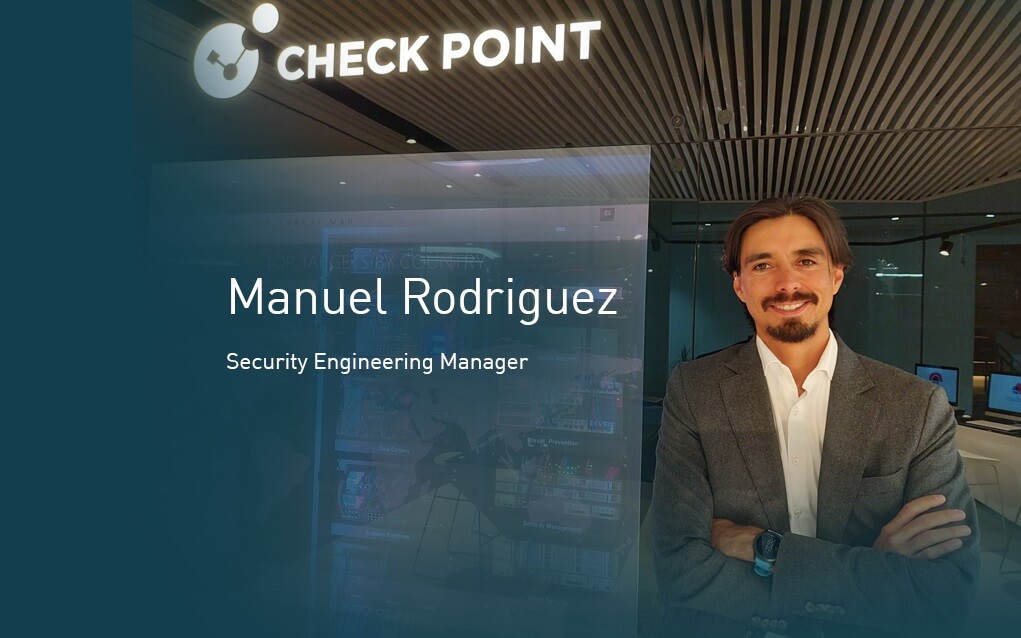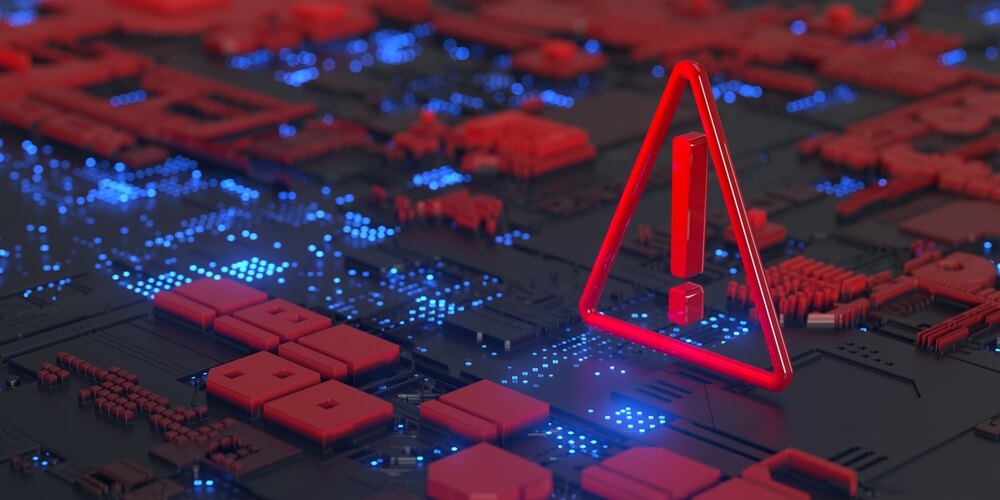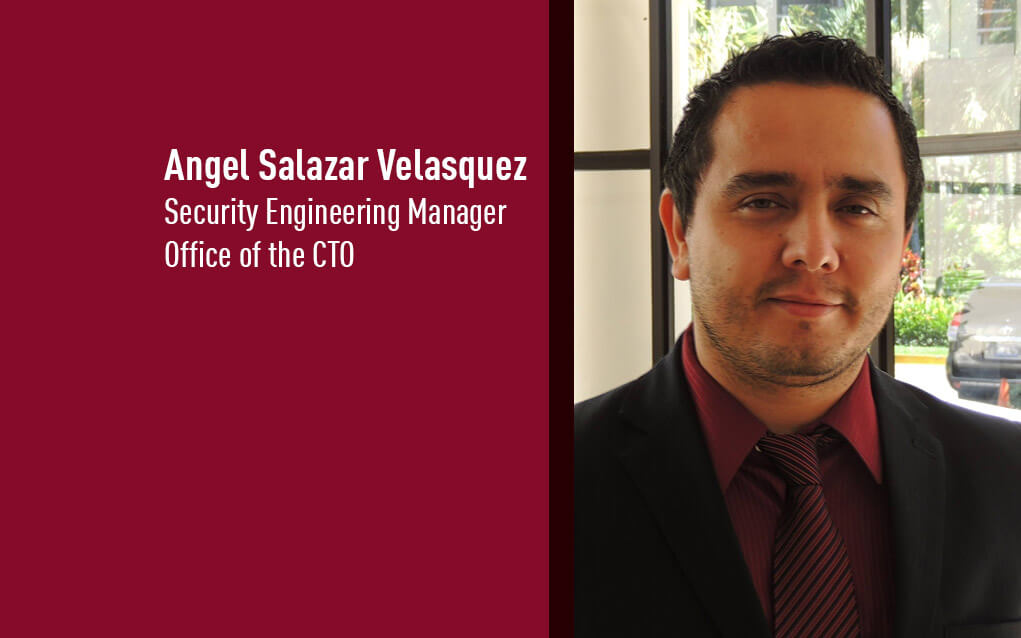
With more than 15 years of experience in cyber security, Manuel Rodriguez is currently the Security Engineering Manager for the North of Latin America at Check Point Software Technologies, where he leads a team of high-level professionals whose objective is to help organizations and businesses meet their cyber security needs. Manuel joined Check Point in 2015 and initially worked as a Security Engineer, covering Central America, where he participated in the development of important projects for multiple clients in the region. He had previously served in leadership roles for various cyber security solution providers in Colombia.
In this insightful Cyber Talk interview, Check Point expert Manuel Rodriguez discusses “Platformization”, why cyber security consolidation matters, how platformization advances your security architecture and more. Don’t miss this!
The word “platformization” has been thrown around a lot recently. Can you define the term for our readers?
Initially, a similar term was used in the Fintech industry. Ron Shevlin defined it as a plug and play business model that allows multiple participants to connect to it, interact with each other and exchange value.
Now, this model aligns with the needs of organizations in terms of having a cyber security platform that can offer the most comprehensive protection, with a consolidated operation and easy enablement of collaboration between different security controls in a plug and play model.
In summary, platformization can be defined as the moving from a product-based approach to a platform-based approach in cyber security.
How does platformization differ from the traditional way in which tech companies develop and sell products and services?
In 2001, in a Defense in Depth SANS whitepaper, Todd McGuiness said, “No single security measure can adequately protect a network; there are simply too many methods available to an attacker for this to work.”
This is still true and demonstrates the need to have multiple security solutions for proper protection of different attack vectors.
The problem with this approach is that companies ended up with several technologies from different vendors, all of which work in silos. Although it might seem that these protections are aligned with the security strategy of the company, it generates a very complex environment. It’s very difficult to operate and monitor when lacking collaboration and automation between the different controls.
SIEM and similar products arrived to try to solve the problem of centralized visibility, but in most cases, added a new operative burden because they needed a lot of configurations and lacked automation and intelligence.
The solution to this is a unified platform, where users can add different capabilities, controls and even services, according to their specific needs, making it easy to implement, operate and monitor in a consolidated and collaborative way and in a way that leverages intelligence and automation.
My prediction is that organizations will start to change from a best-of-breed approach to a platform approach, where the selection factors will be more focused on the consolidation, collaboration, and automation aspects of security controls, rather than the specific characteristics of each of the individual controls.
From a B2B consumer perspective, what are the potential benefits of platformization (ex. Easier integration, access to a wider range of services…)?
For consumers, the main benefits of a cyber security platform will be a higher security posture and reduced TCO for cyber security. By reducing complexity and adding automation and collaboration, organizations will increase their abilities to prevent, detect, contain, and respond to cyber security incidents.
The platform also gives flexibility by allowing admins to easily add new security protections that are automatically integrated in the environment.
Are there any potential drawbacks for B2B consumers when companies move towards platform models?
I have heard concerns from some CISOs about putting all or most of their trust in a single security vendor. They have in-mind the recent critical vulnerabilities that affected some of the important players in the industry.
This is why platforms should also be capable of integration through open APIs, permitting organizations to be flexible in their journey to consolidation.
How might platformization change the way that B2B consumers interact with tech companies and their products (ex. Self-service options, subscription models)? What will the impact be like?
Organizations are also looking for new consumption models that are simple and predictable and that will deliver cost-savings. They are looking to be able to pay for what they use and for flexibility if they need to include or change products/services according to specific needs.
What are some of main features of a cyber security platform?
Some of the main features are consolidation, being able to integrate security monitoring and management into a single central solution; automation based on APIs, playbooks and scripts according to best practices; threat prevention, being able to identify and block or automatically contain attacks before they pose a significant risk for an organization…
A key component of consolidation is the use of AI and machine learning, which can process the data, identify the threats and generate the appropriate responses.
In terms of collaboration, the platform should facilitate collaboration between different elements; for example sharing threat intelligence or triggering automatic responses in the different regions of the platform.
In looking at platformization from a cyber security perspective, how can Check Point’s Infinity Platform benefit B2B consumers through platformization principles (ex. Easier integration with existing tools, all tools under one umbrella…etc)?
The Check Point Infinity platform is a comprehensive, consolidated, and collaborative cyber security platform that provides enterprise-grade security across several vectors as data centers, networks, clouds, branch offices, and remote users with unified management.
It is AI-powered, offering a 99.8% catch rate for zero day attacks. It offers consolidated security operations; this means lowering the TCO and increasing security operational efficiency. It offers collaborative security that automatically responds to threats using AI-powered engines, real-time threat intelligence, anomaly detection, automated response and orchestration, and API-based third-party integration. Further, it permits organizations to scale cyber security according to their needs anywhere across hybrid networks, workforces, and clouds.
Consolidation will also improve the security posture through a consistent policy that’s aligned with zero trust principles. Finally, there is also a flexible and predictable ELA model that can simplify the procurement process.
How does the Check Point Infinity Platform integrate with existing security tools and platforms that CISOs might already be using?
Check Point offers a variety of APIs that make it easy to integrate in any orchestration and automation ecosystem. There are also several native integrations with different security products. For example, the XDR/XPR component can integrate with different products, such as firewalls or endpoint solutions from other vendors.
To what extent can CISOs customize and configure the Check Point Infinity Platform to meet their organization’s specific security posture and compliance requirements?
Given the modular plug and play model, CISOs can define what products and services make sense for their specific requirements. If these requirements change over time, then different products can easily be included. The ELA consumption model gives even more flexibility to CISOs, as they can add or remove products and services as needed.
How can platformization (whether through Infinity or other platforms) help businesses achieve long-term goals? Does it provide a competitive advantage in terms of agility, innovation and cost-efficiency?
A proper cyber security platform will improve the security posture of the business, increasing the ability to prevent, detect, contain and respond to cyber security incidents in an effective manner. This means lower TCO with increased protection. It will also allow businesses to quickly adapt to new needs, giving them agility to develop and release new products and services.
Is there anything else that you would like to share with Check Point’s thought leadership audience?
Collaboration between security products and proper intelligence sharing and analysis are fundamental in responding to cyber threats. We’ve seen several security integration projects through platforms, such as SIEMs or SOARs, fail because of the added complexity of generating and configuring the different use cases.
A security platform should solve this complexity problem. It is also important to note that a security platform does not mean buying all products from a single vendor. If it is not solving the consolidation, collaboration problem, it will generate the same siloed effect as previously described.



